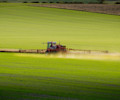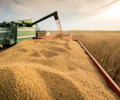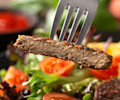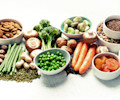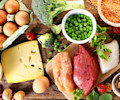In Conversation: Good Meat (Eat Just)
We are the first and only company in the world to sell cultivated meat, a process of making sustainable, safe meat from animal cells instead of slaughtered animals. Our first product is GOOD Meat cultivated chicken, which Singapore has approved for sale, and is currently available at select restaurants. GOOD Meat is a division of Eat Just, Inc., a food technology company with a mission to build a healthier, safer and more sustainable food system in our lifetimes. Our company also makes plant-based egg products under the JUST Egg brand, which millions of families enjoy today from San Francisco to Shanghai.
Interview with Josh Tetrick
What are the main drivers of cost? How and when do you expect to achieve price parity with the conventional counterpart protein?
The main drivers are: cultured media, scaling infrastructure and production yields. Scaling to larger manufacturing plants will help reduce cost over time, not only in the cost of operations and facilities but also in the cost of sourcing nutrients needed for our cultured media. The more cells we can concentrate in culture, the higher our yields will be, and our process will become more cost efficient.
Improving cell densities in our manufacturing while simultaneously reducing the cost of the culture media that we use to achieve these high cell densities is the core activity and goal of our R+D program for our cultivated chicken upstream process.
The economy of scale and building larger facilities with larger bioreactor tanks will be essential in achieving cost parity. Our current projection to reach price parity with conventional meat products is 2025 if we can realize our KPIs around cost evolution and continue to grow our manufacturing capabilities.
How are you working with the conventional meat, seafood and dairy industry?
Currently, our biggest partnership with conventional meat industries is in the sourcing of cells from conventional producers and ranchers. We work with Toriyama in Japan, a renowned wagyu beef purveyor, to produce cultivated Wagyu beef products from the Toriyama cells.

This partnership doesn’t require Toriyama to change any of their own traditional methods or production, but instead allows them to expand their distribution while democratizing the consumption of wagyu globally because we can scale their product and produce it at lower costs down the line. This unique partnership will continue to grow with the evolution of this wagyu product as Toriyama are experts in meat and understand the quality traits of premium wagyu meat and the Eat Just team can learn from their expertise as to what it takes to build a great cultivated wagyu product. This type of partnership can be translated to other species and the development of other meat products in the future.
Food safety is a key area of concern for consumers, how are you addressing this in your processes and ultimately product?
GOOD Meat cultivated chicken is manufactured under controlled conditions which are assured by working with organizations such as the Food Innovation and Resource Centre (FIRC) in Singapore, that has years of experience in food manufacturing. Our cultivated chicken has undergone an extensive and thorough evaluation process by the regulatory authorities in Singapore, which included evaluation of a safety package by a panel of scientific experts. Our cultivated chicken product and manufacturing processes were found to meet these safety requirements.
When compared to conventional chicken, cultivated chicken has much lower microbiological content because the chicken cells are grown in a safe, sterile, and controlled environment.
What is the biggest driver of your environmental footprint (especially at scale), and how are you working to reduce it?
A preliminary study published in Environmental Science & Technology examined the environmental impacts of cultivated meat production using a life cycle assessment method. The research found cultivated meat requires 78 to 96 percent lower greenhouse gas emissions, 99 percent lower land use, and 82 to 96 percent lower water use than conventionally produced meat. In addition, it's well documented that major public health crises have been linked to patterns of conventional meat production and consumption, hence, safer, more efficient and less environmentally harmful ways of producing meat like this are urgently required to satisfy a growing consumer demand.
The biggest driver for environmental impact and energy requirements will be the energy associated with the bioreactors as we scale capacity. Ultimately, in comparison to industrialized meat production, cultivated meat is a much more efficient process in terms of water usage, land, and CO2e. Cultivating meat is also a much faster process than raising livestock for slaughter.
How can the sector support a just transition through the creation of new opportunities to absorb displaced workers and farmers from the conventional meat sector?
As with any other industry, business and workers will evolve over time to adapt their professions and skills to market demand. Cultivated meat isn’t going to fully replace or eliminate these conventional systems in the near future but will run parallel to industrial meat production.
The industry will continue to move forward with partnerships like Toriyama, where ranchers can focus their attention on growing high quality animals/breeds that can become excellent sources of conventional meat and cell candidates for cultivated meat.
In terms of downstream supply chain, we’ll produce meat that needs to be distributed around the world so that process won’t require drastic change. Regulations, quality control, and storage will also be needed. The slaughtering process will evolve as we are decoupling this step as a requirement in the production of meat. In terms of crops and agriculture, the generation of nutrient-dense ingredients for our cultured media will be required so this output will likely shift to accommodate cell growth outside of animal feed



